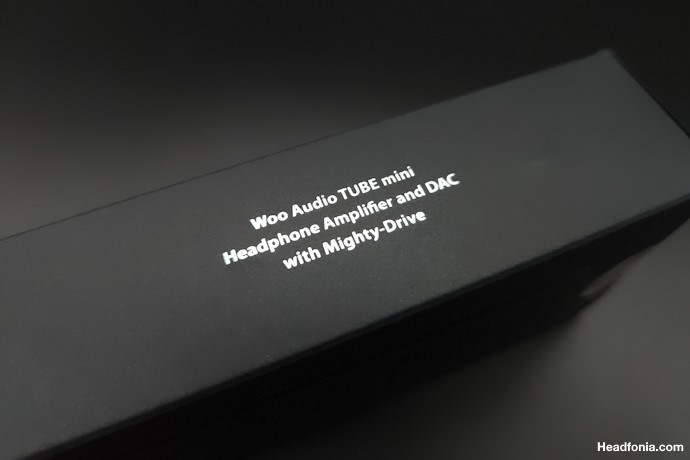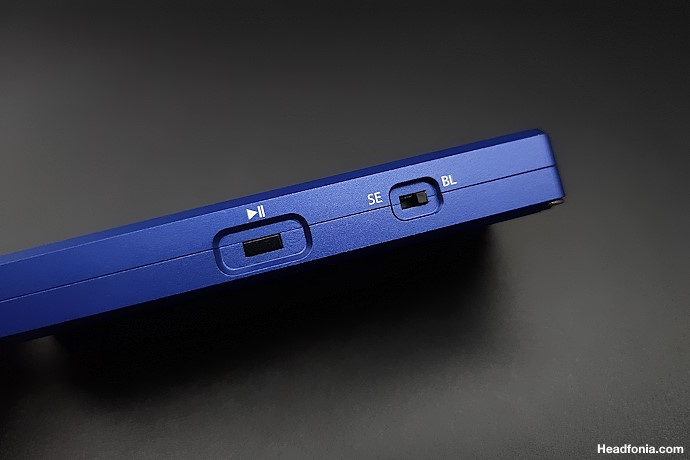In this article we look at the Woo Audio TUBE Mini DAC/AMP. This tube driven dongle is selling for $499 USD.
Disclaimer: The Woo Audio TUBE Mini was sent to us free of charge by Woo Audio directly in exchange for this review. Woo Audio is in no way related to Headfonia.
Woo Audio
Every tube-lover out there has probably heard the name Woo Audio at least once in their life. The New York based company is one of the best when it comes to manufacturing tube amplifiers. Their products are in high regard all around the world and have found many satisfied customers.
Started in 2004 the company is run by Jack and Zhidong Wu. Their father, Wei Wu, is the brains when it comes to designing their products. He is the one responsible for goodies such as the WA8, WA22, WA7 and the summit-fi WA33 amplifier.
Woo Audio is known for their very quiet amplifiers, some people even use IEMs with their big desktop amps and that speaks a lot for tube amplifiers.
We have reviewed many of Woo Audio’s gear on Headfonia in the past, and I have owned a couple of Woo Audio amplifiers over the last 2 decades. The newest Woo Audio unit we’re looking at today is the TUBE Mini, a portable DAC/AMP.
Let’s dive in!
TUBE Mini
The Woo Audio TUBE Mini basically is a portable DAC/AMP in a larger dongle size, measuring (W, H, D): 107mm x 35mm x 7mm and weighing only 49g. It’s quite big as a dongle but that’s quite normal as the TUBE Mini uses double Raytheon JAN 6418 tubes, each tube is designed to amplify one channel (hence a pair for left/right stereo). As such you can’t make the device smaller size wise. That said, there are far larger sized portable DAC/AMPs out there, so I don’t see the TUBE Mini’s size as annoying at all.
The TUBE Mini was designed to drive even the hardest to drive headphones, and we’ll be checking that out later in this article. You can find the TUBE Mini’s dedicated web page here.
Can a small amp deliver a high-quality and powerful sound? This simple question kept us motivated and led to the creation of two of the smallest products we’ve ever offered – WA8 Eclipse and WA11 Topaz. But the pursuit to go smaller continues. In late 2019, we created a powerful solid-state amp that is pocketable but we felt it was missing our vacuum tube roots. A eureka moment came when we placed the Eclipse and the Topaz amps side by side; we thought, “can we engineer a portable vacuum tube amp/DAC based on these two products?” Excited about the possibility, we focused our engineering efforts on achieving this vision.
On the inside we next to the double tubes find Woo Audio’s Mighty-Drive technology. The result – according to Woo Audio – is the warm sound of vacuum tubes and the superpower of MOSFET amplification for an effortless sound that comes alive with full-sized headphones. There are three technologies working seamlessly in TUBE mini – a power management system for plug-and-play setup, a tube headphone amplifier, and a high-resolution lossless DAC; all in an impossibly small design.
The DAC used by Woo Audio is a non-specified ESS SABRE DAC capable of doing up to 24-bit/384kHz PCM, and up to DSD256 (11.2MHz). I do quickly want to come back to the tubes inside the TUBE Mini. In audio component applications, tube microphonics from external mechanical vibrations can transfer to the tungsten heaters and thus become audible in the signal path. In order to reduce mechanical vibration, the tubes in TUBE mini are intricately mounted on a spring-loaded suspension system similar to seismic damper systems found in earthquake protection measures. It’s a really impressive system Woo Audio is using here, but I would still recommend not moving the TUBE Mini around too much. More about this in a bit.
The TUBE Mini is available in blue, black, red and silver and the price is set at $499 for the U.S. and $549 shipped worldwide.
Packaging & Accessories
For $499 you get a small and simple package containing the following:
- TUBE mini balanced headphone AMP / DAC x 1
- 3-year limited warranty [learn more]
- USB-C to USB adapter cable x 1
- Travel case x 1
- Quick start guide
It’s a nice package and I especially like DragonTail like adapter cable which is included. No, the TUBE Mini is not a cheap portable DAC/AMP, but you do get excellent build quality, tubes on the go and quite a bit of power for a device this size.
Design, Build Quality, Lay-Out
The TUBE Mini is designed and assembled in New York, USA and it measures 107mm x 35mm x 7mm (W, H, D). The TUBE Mini comes with an anodized aluminium chassis and it weighs a mere 49g.
The unit is, as said before, isn’t the smallest but with the tubes and suspension system inside, I don’t see how it could be much smaller. Design wise I quite like the TUBE Mini. It on both sides has a window so you can see the tubes on the inside. Note that the orange light is coming form a small LED, you can’t see the tubes glowing. Anyway, it’s still nice to see the tubes on the inside.
On the top of the unit we also have the Woo Audio tube logo, TUBE Mini name and the LED which as usual displays the file quality. On the other side we next to the window have the Woo Audio name but nothing more. On the top of the unit you find the Single Ended as well as the Balanced output. The bottom of the unit has the USB-connector. On the right side of the TUBE Mini we find the SE/BAL selector as well as the Play/Pauze key. The left side holds the volume buttons (long press for changing tracks)
All-in-all the TUBE Mini is nicely built and is has a perfect finish. I really like how it looks and feels and using it is quite easy as we’ll discover now in the next chapter.
Versatility & Usability
To start using the TUBE Mini, all you need to do is connect it to your source. There’s no driver needed and the unit itself is USB bus powered. So it’s a plug and play unit with Windows 10 & 11 and all versions of macOS. The TUBE Mini is compatible with Apple, Android, Mac and Windows computers with USB or USB-C / Thunderbolt 3 input. I have used it without any issues with my laptop, OnePlus Open phone as well as my iPhone 15 Pro.
The TUBE Mini is very light (49g) but it isn’t as small as the usual DAC/AMP dongles. It is designed to be used in hotel rooms or when on the go but more so when you can quietly leave the unit on a desk or couch. Even though Woo Audio has implemented the impressive suspension system, you will directly hear the impact of moving or budging the TUBE mini when it is on. Woo Audio recommends using the volume control on your source in order to minimize the interaction with the unit, not to cause any vibrations disturbing the tubes.
Right after start-up there will be a high pitched noise for a couple of seconds when the tubes are heating up, but this quickly disappears. Temperature wise the TUBE Mini gets a little warm but nothing worth mentioning really.
Control wise the buttons on the TUBE Mini work well. They are easy to reach and use. On my Oneplus phone, the volume control and song skipping function unfortunately did not work when using Tidal or Spotify. On my laptop however, all the Spotify, Tidal and Roon controls work just fine. On the iPhone the controls also work as they should so it’s probably my OnePlus phone that is acting up here.
For those who like to see what quality files your source is playing, the LED comes to the rescue and it has the following color codes: green is cd quality, amber is high-res music and yellow Master quality authenticated (MQA).
To use the TUBE Mini there are some specific guidelines to follow. When connecting a balanced headphone, first switch the TUBE Mini to SE mode. This is to turn off the balanced circuit. Then connect your balanced headphone. After that plug in the TUBE Mini to your source, and flip the switch back to the balanced position. All done! To shut down the TUBE Mini, do the same in the other order: switch to the SE output and unplug your headphone. This way there’s no pop when disconnecting the headphone. Then you can unplug from your source.
You can see it here for yourself:
I do also want to give you three warnings. The first one is about the volume control. The TUBE Mini gets loud fast, make sure you set your volume to 0 before clicking play. Second, a word about radio interference. A couple of people reported the TUBE Mini suffering from this, but I for one have had no issues at all with noise even on my phone. Your experience could be different however if you’re using a source with cellular or Wi-Fi reception. Third, the unit’s weight. It is light and the USB adapter easily disconnects when it’s being pulled on. On one day of testing the TUBE Mini I have pulled it from the desk five times, making it fall on the floor. Luckily it survived but it is bound to happen again, so be careful.
The review continues on the second page with the specs and the full part on Sound. Click here or use the jumps below.
Page 2: Specifications, Sound General, Sound Synergy, Conclusion, Summary














